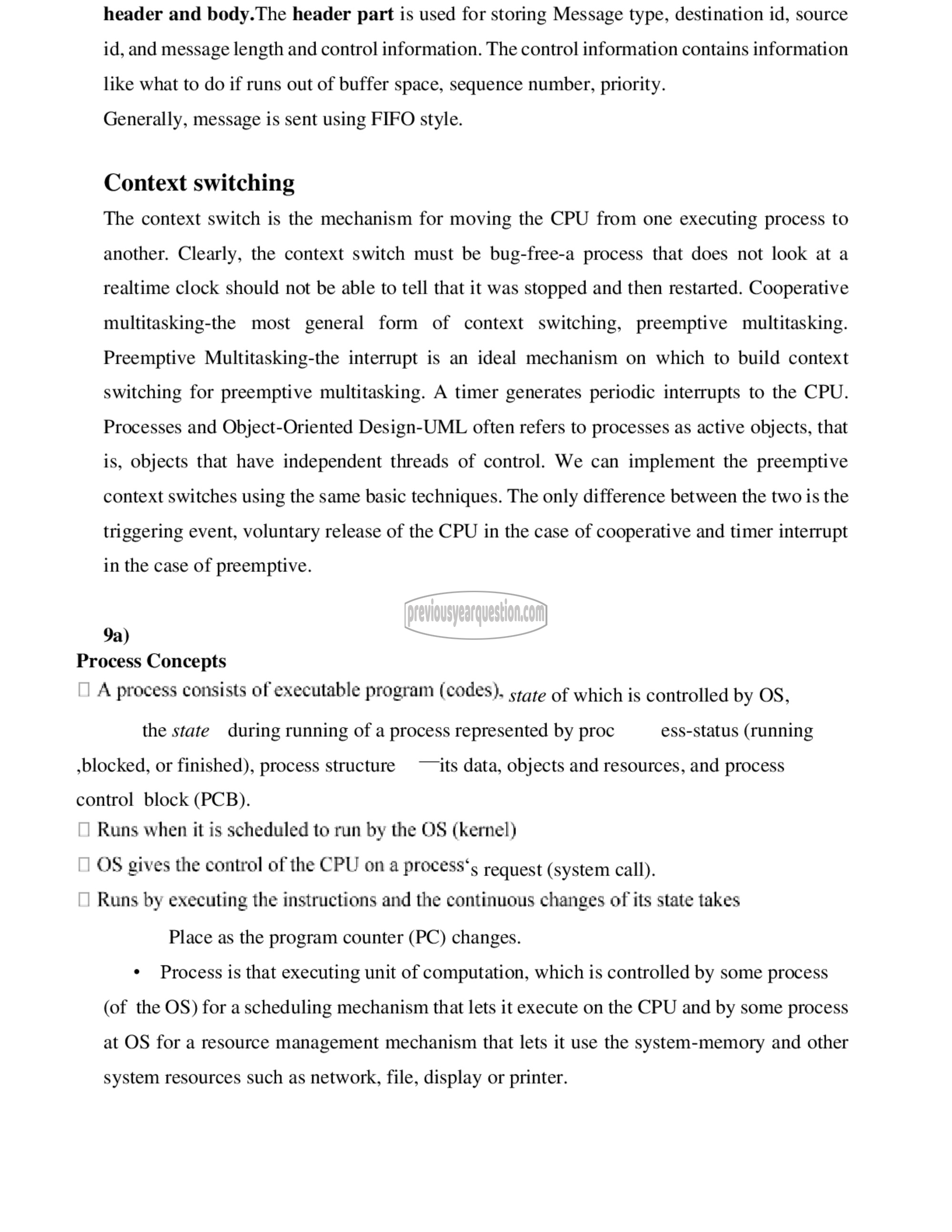APJ ABDUL KALAM TECHNOLOGICAL UNIVERSITY Previous Years Question Paper & Answer
Semester : SEMESTER 6
Subject : Embedded System
Year : 2018
Term : MARCH
Scheme : 2015 Full Time
Course Code : EC 308
Page:39
header and body.The header part is used for storing Message type, destination id, source
id, and message length and control information. The control information contains information
like what to do if runs out of buffer space, sequence number, priority.
Generally, message is sent using FIFO style.
Context switching
The context switch is the mechanism for moving the CPU from one executing process to
another. Clearly, the context switch must be bug-free-a process that does not look at a
realtime clock should not be able to tell that it was stopped and then restarted. Cooperative
multitasking-the most general form of context switching, preemptive multitasking.
Preemptive Multitasking-the interrupt is an ideal mechanism on which to build context
switching for preemptive multitasking. A timer generates periodic interrupts to the CPU.
Processes and Object-Oriented Design-UML often refers to processes as active objects, that
is, objects that have independent threads of control. We can implement the preemptive
context switches using the same basic techniques. The only difference between the two is the
triggering event, voluntary release of the CPU in the case of cooperative and timer interrupt
in the case of preemptive.
9a)
Process Concepts
| | A process consists of executable program (codes). ரச of which is controlled by OS,
the state during running of a process represented by proc ess-status (running
sblocked, or finished), process structure 115 data, objects and resources, and process
control block (PCB).
[| Runs when it is scheduled to run by the OS (kernel)
ப OS gives the control of the CPU on a process‘s request (system call).
[| Runs by executing the instructions and the continuous changes of its state takes
Place as the program counter (PC) changes.
٠ Process is that executing unit of computation, which is controlled by some process
(of the OS) for a scheduling mechanism that lets it execute on the CPU and by some process
at OS for a resource management mechanism that lets it use the system-memory and other
system resources such as network, file, display or printer.
